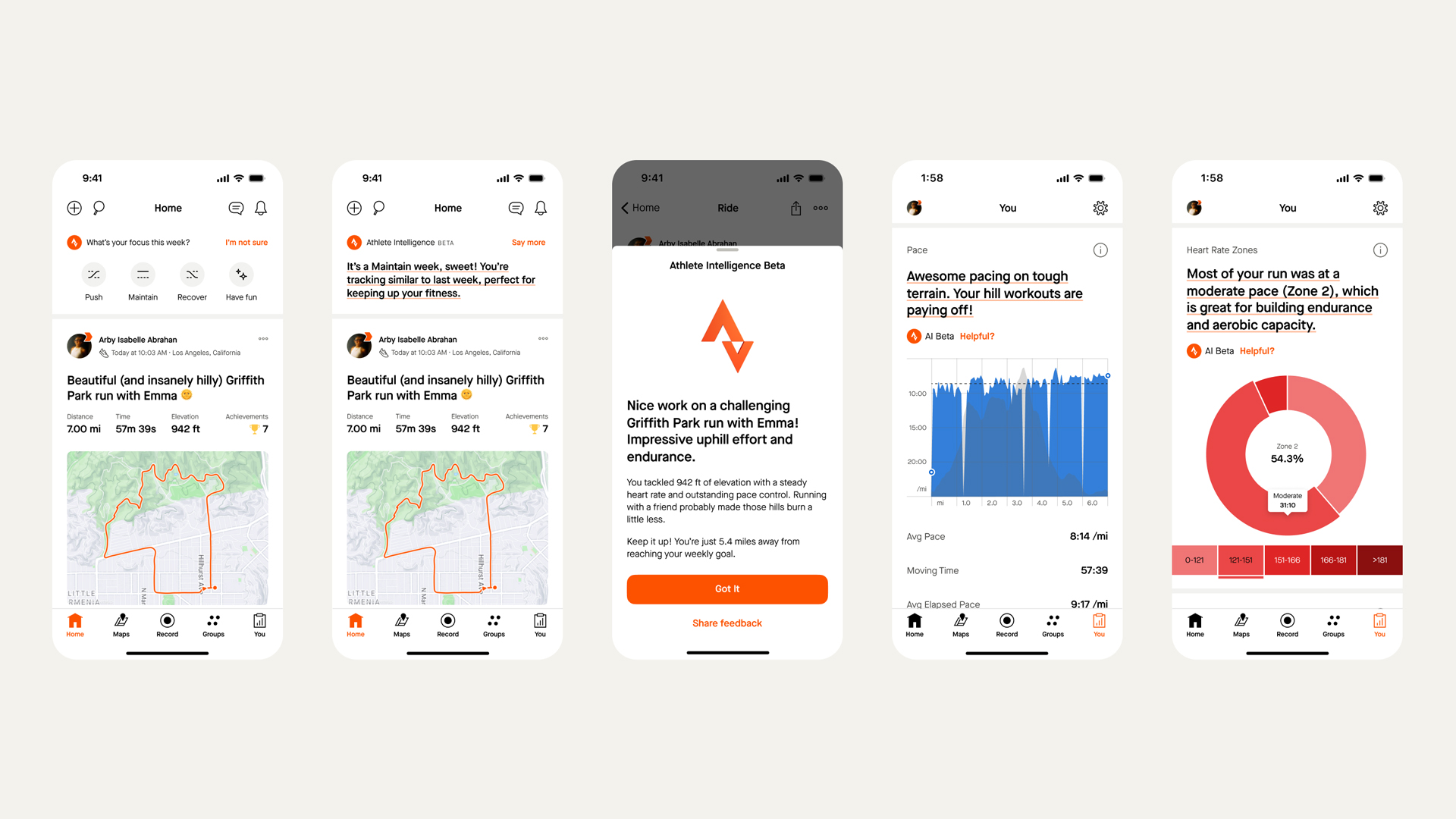
Who could have anticipated the arrival of Dark Mode on Strava? It's a delightful surprise, isn't it? Yet, here we are, with Dark Mode making its way to Strava, accompanied by a plethora of other exciting features.
Being one of the 200 or so people who attended Camp Strava this year in Los Angeles, I was given exclusive access to some of the upcoming features, including Dark Mode and Athlete Intelligence, before they are rolled out to the rest of the 125 million-strong user base.
Like everyone else, I wondered for years why Dark Mode took so long to implement in the app. It feels like an easy fix; you swap the colours from bright to dark. Surely, it shouldn't take so much effort?
According to Michael Martin, CEO at Strava, this wasn't an easy task to accomplish. All the UI elements had to be changed or altered to ensure Dark Mode doesn't feel clunky. Plus, having a Dark Mode means that from this point on, all new features need two sets of UI elements, which is, admittedly, more effort than designing for one mode only.
How is Dark Mode? It might just be the novelty, but since we were told we've got access, I set mine to Dark Mode and have had it continuously since then. You can set it so Bright/Dark Mode matches the cadence of your smartphone's settings, but come on—I waited long enough to see this, so I'll enjoy it perpetually from now on.
Truth be told, focusing on Dark Mode is like not seeing the forest from the trees. It's a bit of fan service, but the important stuff is the new AI-powered and 'updates for her' features.

Machine learning and artificial intelligence are everywhere, and like most other data-driven companies, Strava sits on a ton of useful numbers that can be utilised to help us train better. With large language models, this otherwise dormant power source can finally be unlocked.
Matt Salazar, CPO of Strava, helped me understand how AI can help both beginner and pro Strava athletes benefit from AI. Athlete Intelligence, a new addition to the ever-increasing features, translates training data into easy-to-understand comments beginners can work with.
Meanwhile, AI-enabled Leaderboards are aimed at the Strava pros. And I hear you; you don’t need AI to spot random anomalies in a leaderboard. However, you must consider there are thousands and thousands of leaderboards that change all the time – it would be too much effort to hire a team to keep combing through all of them continuously.
Plus, some of the leaderboard entries look okay, yet they could be wrong, and AI can spot these. Some people will try to chat the system cleverly, only shaving a few seconds off the best times on the best athletes at any given segment. How will AI help filter these?
Luckily, algorithms can see not only the leaderboard entry but also other training data from the users. This means if the cheater only has a few number one positions and no other training data, or all of their runs/cycles are extremely fast, yet no one knows about them, AI might flag that as suspicious.

I’m nowhere near as competent in any of the sports I pursue to be on leaderboards, so I’ll probably use Athlete Intelligence more. Sure, the feature is aimed at beginners, but it’s nice to see some comprehensible messages accompanying those charts, even if it just says I pushed myself harder on the hills on my last run.
Strava is huge, and it’s only getting bigger. Having spoken to quite a few of the members of the new leadership team, I know many of them were keen Strava users for years before they got to work for the company. They are generally a nice bunch of people, too.
Sure, it is also a business, and some new features will be locked behind a paywall. You might think, ”well, it’s my data, why can’t I see it?” The truth is, you can see your data; what you miss out on as a free user are the insights based on your data. The stuff that helps you put your training into perspective and train harder.
The new features are merely the tip of the iceberg of an already robust offering from Strava. Since the subscription fee hasn’t increased, technically, you’re getting more bang for your buck with the additional functions, which is why it’s certainly worth considering signing up for Strava. If you haven’t already, of course.







